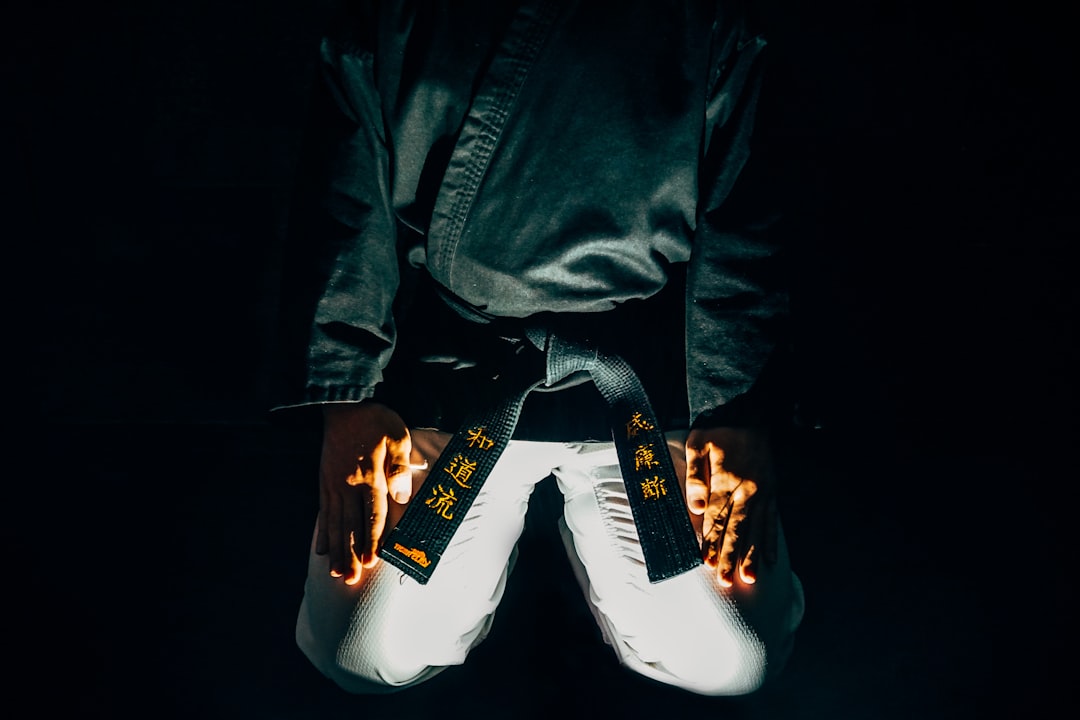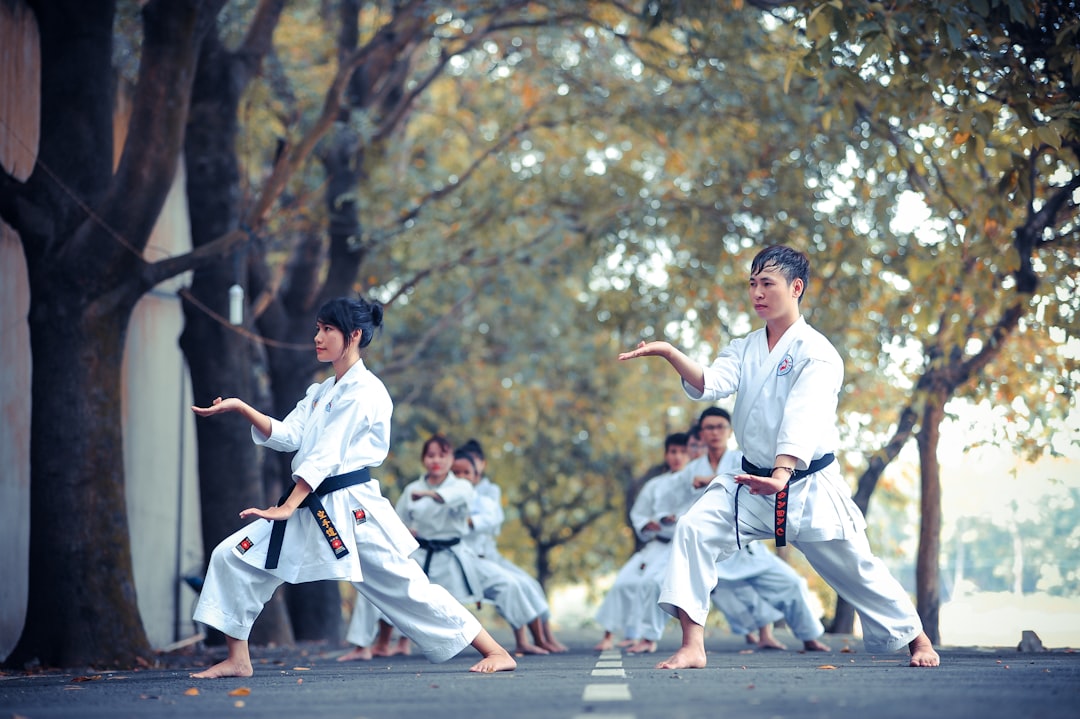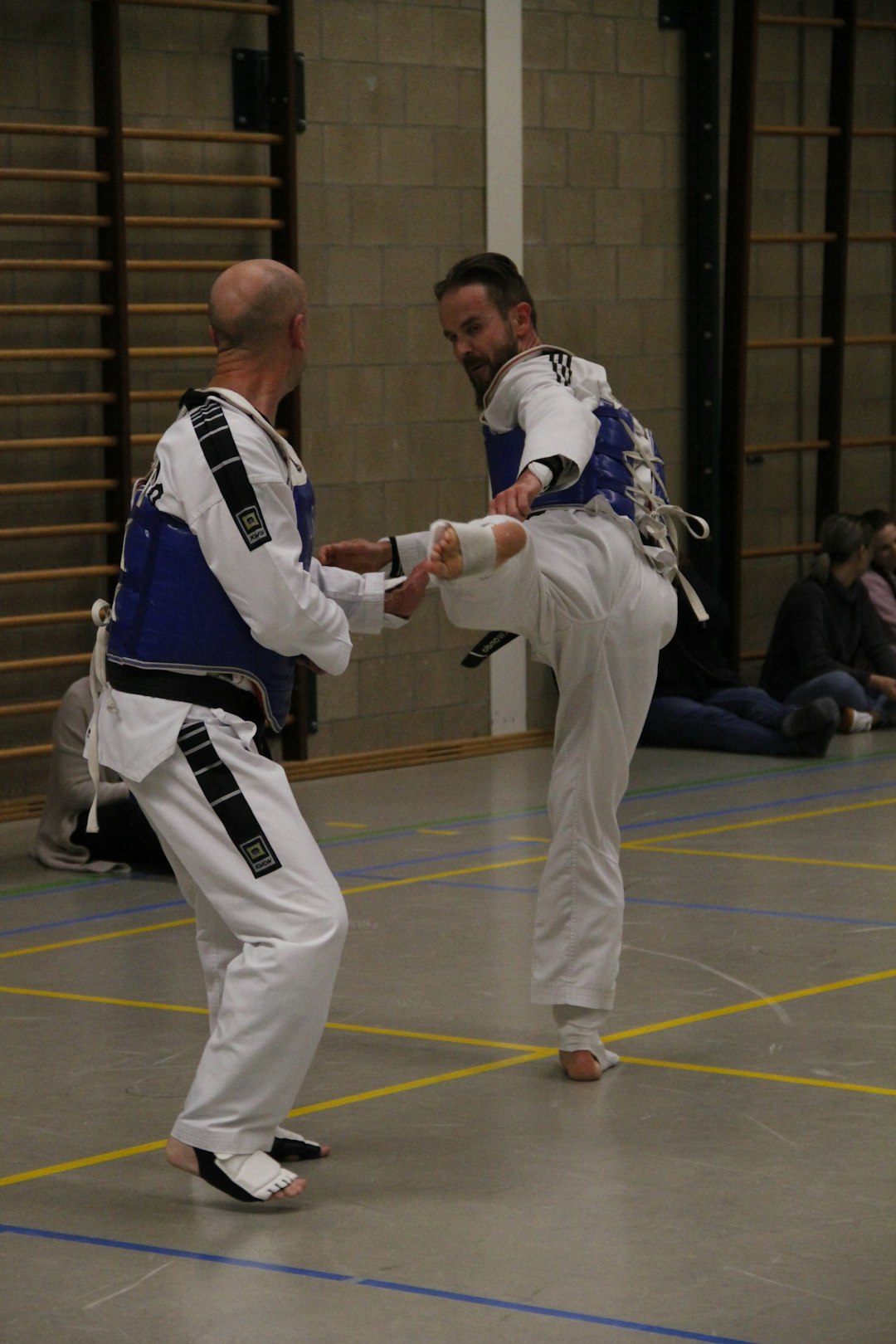The article discusses the importance of traditional and modern karate outfits, known as keikogi and karate gis or do-gis. It explains that the keikogi is a foundational element in karate practice, essential for its functional benefits like unimpeded movement and sweat absorption, and is a mark of respect for the martial art's traditions. The obigarami, or belt, reflects the practitioner's rank within the dojo. The karate gi, which includes an ukiwa jacket and wide-legged trousers, also plays a dual role in being both practical for movement and symbolic of karate's cultural values, embodying purity and humility. While the traditional white cotton uniform has evolved to include modern variations with different weights, weaves, and protective features like padding for sparring, it remains true to its core function of facilitating training. Practitioners must choose their gi with consideration for dojo standards and competitive event regulations, as these outfits are more than mere clothing—they are an integral aspect of a karateka's identity and performance in the art.
Discerning the correct terminology for a karate uniform is a fundamental aspect of martial arts etiquette and history. This article delves into the essence of karate attire, clarifying what a karate outfit is traditionally known as, its composition, and how it has evolved over time. From the traditional cotton weave of the “Gi” to modern adaptations that cater to performance and personal expression, we will explore the significance of each element in a practitioner’s garb. Understanding the karate outfit called Gi is key to appreciating the discipline’s rich heritage and the practical aspects of training. Join us as we examine the intricacies of this quintessential martial arts uniform.
- Understanding the Essentials of Karate Uniforms: What Do You Call a Karate Outfit?
- The Composition and Characteristics of Traditional Karate Gi
- Modern Variations and Styles of Karate Training Attire
Understanding the Essentials of Karate Uniforms: What Do You Call a Karate Outfit?

When engaging in the practice of karate, the attire chosen can be as impactful as the techniques performed. A practitioner’s outfit serves a dual purpose: it provides the functionality necessary for unrestricted movement during practice, while also embodying the respect and discipline that karate instills. Often made of cotton or a cotton blend, these garments are designed to absorb sweat and withstand the rigors of martial arts training. But what do you call a karate outfit specifically? The traditional karate uniform is known as a “keikogi” in Japanese. This term directly translates to ‘training clothes’ and is distinct from everyday wear or formal garments. Another essential component of the karate ensemble is the belt, or “obigarami,” which denotes the wearer’s rank within the dojo. Understanding the terminology not only shows respect for the art but also helps in ensuring that practitioners are well-equipped, both physically and ceremonially, to practice with dedication and authenticity. Is it necessary to wear a keikogi during karate training? Absolutely; the keikogi is tailored specifically for the movements of karate, allowing for optimal performance and respect for the tradition. What is the belt in karate called? It is called an “obigarami,” and it is a key element that signifies a practitioner’s level of skill and commitment to the martial art.
The Composition and Characteristics of Traditional Karate Gi

When engaging in the disciplined practice of karate, practitioners don a uniform that is both functional and symbolic—commonly referred to as a karate gi. This traditional garment’s composition typically consists of heavyweight cotton or hemp fabric, which not only allows for ease of movement during various stances and techniques but also signifies the wearer’s dedication to the martial art. The gi is designed with a simple yet effective cut; it features a jacket known as an ‘ukiwa’ or ‘open-shell’, which is paired with trousers, both of which are meant to be loose-fitting for unrestricted mobility while still being respectful to the practice’s traditional roots. The top, sleeveless jacket, and the wide-legged pants are traditionally white, symbolizing purity and humility within the martial art. The gi is often complemented with a belt, or ‘obi’, which holds the waistband of the trousers closed and further signifies the wearer’s rank within the karate discipline. Are the fabrics of the gi breathable? Yes, they are; the cotton or hemp material allows air to circulate, ensuring that practitioners remain comfortable during vigorous training sessions. Is the design of the gi standardized across different styles of karate? While there may be slight variations in fit and style depending on the specific tradition or school of karate being practiced, the fundamental characteristics of the karate gi—its material, cut, and color—are consistent and integral to the martial art’s cultural significance.
Modern Variations and Styles of Karate Training Attire

Karate practitioners today have a variety of options when it comes to their training attire, which are often referred to as karate gis or do-gis. These modern variations and styles serve the functional purpose of the traditional gi while also reflecting contemporary fashion trends and personal expression. The classic white cotton uniform, which is the standard issue in most martial arts schools, has evolved to include different weights and weaves for comfort and durability, catering to both beginners and experienced karateka alike. Additionally, specialized designs have emerged for sparring, which incorporate padding and protective elements in strategic areas to safeguard the wearer during contact training or competitions. The choice of fabric, color, and design can vary widely, with some individuals preferring traditional looks while others opt for more modern, colorful patterns that allow for greater visibility and movement.
When selecting a karate outfit called a gi, it’s important to consider not only personal preference but also the requirements of the dojo or organization under which one trains. For instance, certain competitions may have specific regulations regarding the type of gi allowed. The traditional two-piece ensemble consists of a jacket and trousers, often held shut by belts or ties, and is designed to facilitate freedom of movement during practice. Modern iterations might include additional features like reinforced knees for durability or stretch panels for mobility, making the karate gi both functional and adaptable to individual needs. Whether practicing traditional forms or engaging in high-intensity sparring sessions, the karate uniform plays a pivotal role in the identity and performance of the martial artist.
In conclusion, the term “karate uniform” is commonly used to describe the attire worn by practitioners during training. Delving into the specifics, traditional karate gis, characterized by their white cotton fabric and simple design, serve as a canvas for discipline and respect within the martial arts community. While modern interpretations of this essential garb offer variations in color and style, they all retain the core principles that define a true karate outfit called. Whether one practices Shotokan, Goju-ryu, or any other style, the uniform remains an integral aspect of the practice, symbolizing unity, humility, and the shared journey of martial artists worldwide. Understanding its composition and characteristics, as well as the modern variations available, ensures that every karateka can find an appropriate garb for their training needs.
